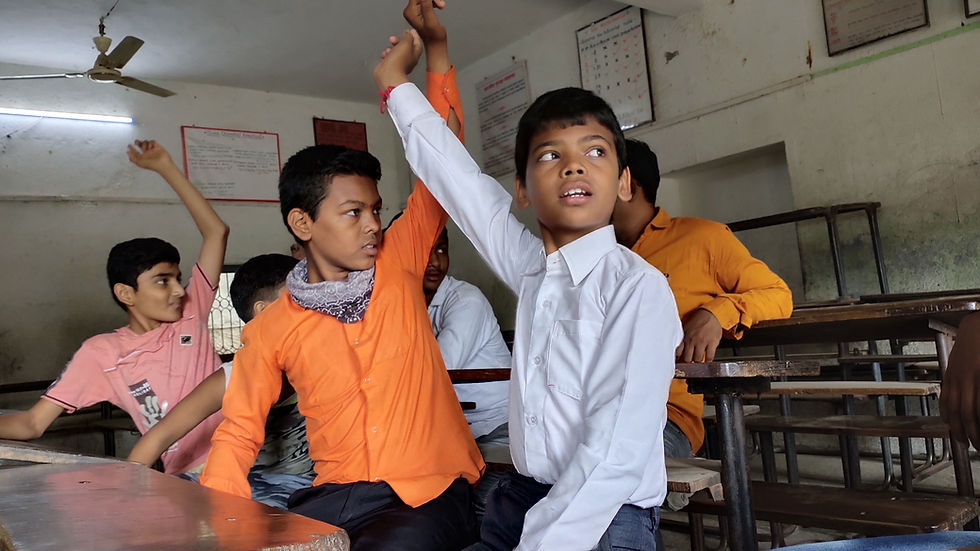Managing to Lead: Reframing School Leadership and Management in India
- Anuraag Shukla

- Sep 5, 2020
- 4 min read
Unlike western countries, research on school leadership and management in developing countries is quite sparse. In the Indian context, it is the head-teacher (also known as the principal, headmaster, or principal teacher) who occupies the central role in the school leadership and management. A typical day of a school principal involves enlisting and guiding the talents and energies of teachers, students, and parents toward achieving common educational aims (Wise, Stutchbury & Cooke, 2016). From the effective utilization of resources to establishing a healthy relationship with the local community, the head-teachers in India bear the vast responsibilities. The School Leadership Development Programme (SLDP), initiated by the National University of Education Planning and Administration (NEUPA), lists out five key areas where head-teachers could play an important role. These key areas are; leading partnerships, developing self, transforming the teaching-learning process, building and leading teams, and leading innovations (pg. 23, SLDP 2014). The RTE schedule specifies that, in a school where there are 150 or above students, there will be five teachers and one head-teacher appointed, whereas, in schools where the numbers are less than 150, the senior teacher would bear the responsibility of a head-teacher (pg. 12). While not directly specifying the roles and responsibilities of a head-teacher, The Right to Education Act (RTE Act, 2009) entrusts significant power in the hands of head-teachers in the functioning of government schools.

The RTE Act locates the local governance in SMCs (School Management Committees), which consists of the elected representative of the local authority, parents of the children, and teachers. Being a secretary to the School Management Committee (SMC), head-teacher nominates its members and calls its meetings from time-to-time to discuss the tasks such as preparing a school development plan, monitoring the working of the school, manage grants received from appropriate authorities and perform other functions as may be prescribed. A head-teacher also provides both the instructional and administrative leadership to a school. The responsibilities under the instructional leadership role consist of framing the school goals, coordinating the curriculum, planning for the teachers’ capacity development, and working with local communities to improve enrolment and learning outcomes.
In contrast, administrative leadership includes scales like accountability roles and bureaucratic responsibilities such as managing school grants and budget, coordinating with higher officials. These head-teachers are found to have varying degrees of both leadership styles. In a survey conducted by Educational Initiative and Wipro, titled Quality Education Study (QES), it was found that a quarter of school principals’ time was spent on administrative tasks such as recruitment, budgeting, scheduling, and internal meetings while a little less time was spent on instructional leadership tasks such as developing curriculum and pedagogy. The study also revealed that one-tenth of school principals’ time was spent on other activities such as ensuring campus cleanliness, carrying out case studies, entertaining visitors, attending and conducting workshops, interacting with NGOs and other civil society organizations (QES, 2011).
School leadership, and the roles and responsibilities of head-teachers in India
The term school leadership came into currency in the late 20th century when demands were made on the US schools for higher levels of pupil achievement. These expectations were accompanied by calls for accountability at the school level management and performance. The attempts were made to borrow the concept of management from the business world and apply them to schools (Bogotch, 2005). The new public administration and governance theories also supported the idea of leadership, which was dynamic and proactive. Soon, many US and United Kingdom (UK) universities started offering courses on school leadership or educational leadership (Bush, 2008). Since then, various educational leadership theories and perspectives have been presented and explored. Some of these perspectives which dominated the discourse are instructional leadership, distributed leadership, transformational leadership, social justice leadership, and teacher leadership (Leithwood, 2005). Researchers have studied the relationship between school leadership with various other school factors such as school culture, identity, motivations, and behaviors of teachers, students’ performance, etc. In contrast to the western experience, school leadership and management have remained an understudied area.
Historically, the concept of the head-teacher or principal first appeared in the colonial era. The principal or head teacher’s role began to take shape when the British colonial government-appointed school superintendents to monitor the government-aided school. Generally, it was a senior teacher from the school who represented the school in front of the school superintendent, a representative of British colonial power. This role of intermediary between the school and authorities got further cemented when the British government started appointing principals in government-run or aided schools by the end of the 18th century (Saravanabhavan, Pushpanadham, & Saravanabhavan, 2016). By the early 19th century, principals were performing tasks such as maintaining order, improving academic activities, and managing school resources. Even the post-independence, the core characteristics of a principal remained the same where he or she had to play a role of intermediary between the state and the local community. The focus was more on the managerial competencies of head-teachers and principals, and they were expected to “push teachers to work, emphasize production in terms of higher pass-percentage, foster community relationship, prepare appropriate instructional material and aids, help improve instructions by working with teachers, organize pilot studies and action research, help teachers through capacity building, ensure good relationship and staff morale within the school, and assist the organizational development at the school” (Pandya, 1975). Resolving disciplinary problems at schools, advising, and directing teachers were considered as the primary functions of a principal’s responsibilities (Sharma, 1982).
Read the full article here




Comments